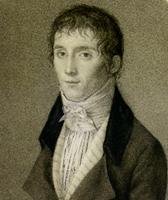Nicéphore Niépce (nonfiction): Difference between revisions
Jump to navigation
Jump to search
No edit summary |
No edit summary |
||
| Line 14: | Line 14: | ||
== Fiction cross-reference == | == Fiction cross-reference == | ||
* [[Crimes against light]] | |||
* [[Gnomon algorithm]] | * [[Gnomon algorithm]] | ||
* [[Gnomon Chronicles]] | * [[Gnomon Chronicles]] | ||
Latest revision as of 20:08, 29 March 2019
Joseph Nicéphore Niépce (French: [nisefɔʁ njɛps]; 7 March 1765 – 5 July 1833) was a French inventor who made pioneering contributions to photography.
Niépce developed heliography, a technique he used to create the world's oldest surviving product of a photographic process: a print made from a photoengraved printing plate in 1825.
In 1826 or 1827, he used a primitive camera to produce the oldest surviving photograph of a real-world scene.
Among Niépce's other inventions was the Pyréolophore, the world's first internal combustion engine, which he conceived, created, and developed with his older brother Claude.
In the News
Fiction cross-reference
Nonfiction cross-reference
External links:
- Nicéphore Niépce @ Wikipedia
